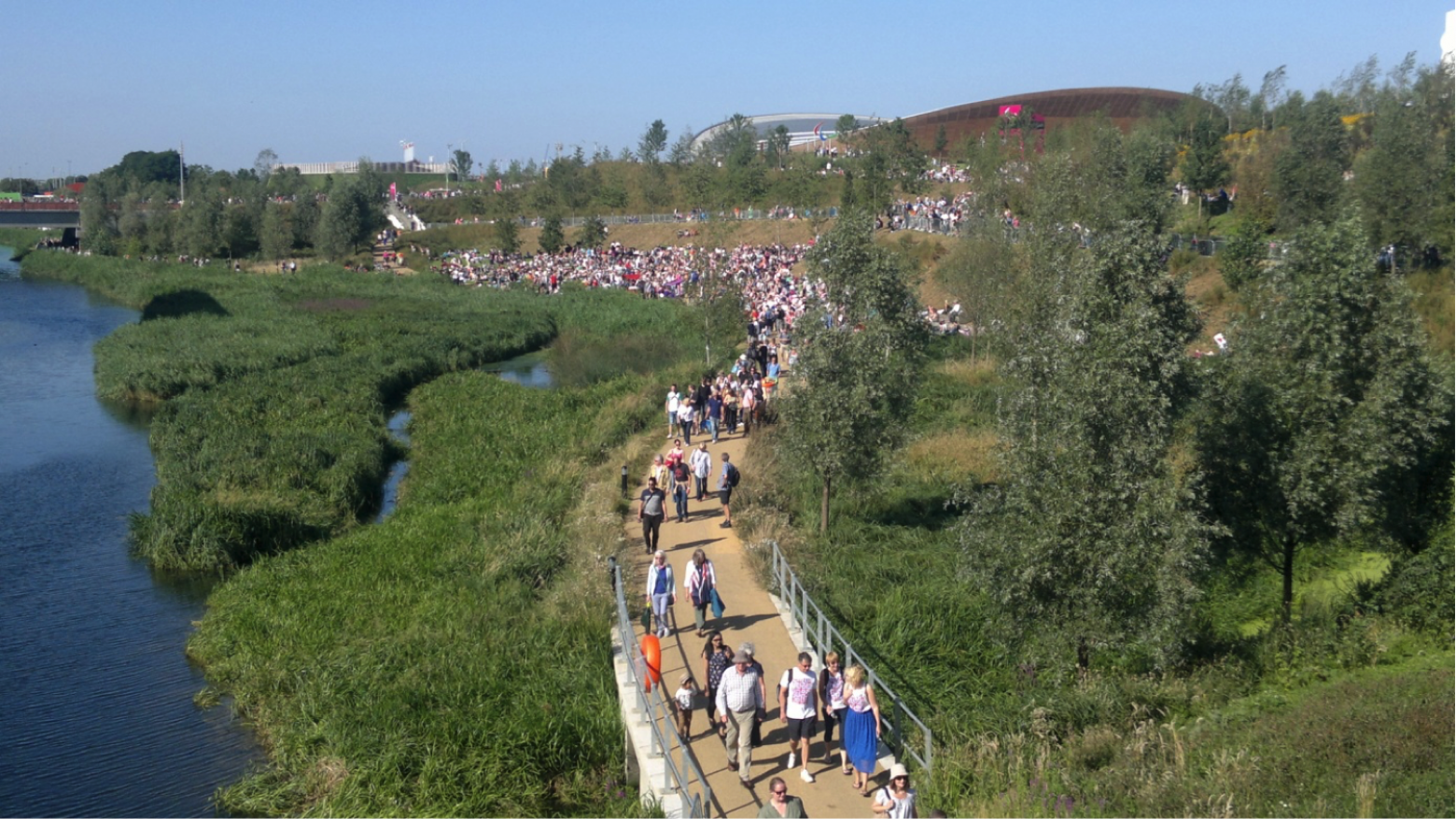Gland, Switzerland, 06.11.2020 (IUCN) – While sports and nature often occupy and compete for the same green spaces in cities, well-planned sports infrastructure can make positive contributions to urban biodiversity. A new guide published today by the International Union for Conservation of Nature (IUCN), in collaboration with the International Olympic Committee (IOC) and the San Francisco Estuary Institute (SFEI), identifies key ecological criteria that city officials and sports venue developers can apply to incorporate the needs of nature in their planning.
The new guide, published as part of the IUCN-IOC partnership and titled Sports and urbanbiodiversity: a framework for achieving mutual benefits for nature and sports in cities, explains how investing in urban biodiversity provides an opportunity for sports federations, venue owners and operators, local organising committees as well as city planners and investors to build a long-lasting and socially-positive legacy in cities.
Sports and urban nature both play essential roles in the wellbeing of city dwellers, contributing to a liveable urban environment. New sports infrastructure and events present unique opportunities to create space for biodiversity and strengthen the health and resilience of our cities… This guide provides an important tool for urban planners, developers and operators of sports venues to make the most of these opportunities.
IUCN Director General Bruno Oberle
We hope that this guide, together with other guides in the series, will help the sports community to better understand its relationship with nature and inspire it to take concrete actions to help address today’s immense environmental challenges… Sporting activities must benefit nature if we want to continue enjoying them while striving to achieve our vision of building a better world through sport.
IOC Director General Christophe De Kepper
The guide outlines a planning framework containing seven ecological criteria that determine the biodiversity impact of sports infrastructure, including: habitat patch size; connectivity across the urban landscape; quality of the landscape matrix surrounding a habitat patch; diversity of habitats available; native vegetation; special resources like water and nesting locations; and, wildlife-friendly management.
Civic and business leaders often need to create cost-effective solutions to address complex environmental issues. By applying these seven elements, local authorities and the sporting community can help build resilient cities for athletes and wildlife.
SFEI Senior Scientist Robin Grossinger
The report highlights how sports venues and events that have already adopted these measures have contributed to nature conservation in the urban environment. For example:
- The remediation and construction of the site of the Queen Elizabeth Olympic Park, built on the occasion of the London 2012 Olympic and Paralympic Games, created a 45-hectare urban habitat patch in addition to recreational space for visitors.
- Le Golf National in France, the host of the annual French Open and the 2018 Ryder Cup, promotes habitat diversity with 10 different habitats present on the site, supporting 350, including 13 rare, species.
- In New South Wales, Australia, members of the Kinross Wolaroi School Rowing Programme launched a project to restore degraded land around the Spring Creek reservoir. The team hosted community workdays to clear invasive species from a section of the shore and plant native plants.
- The Kenilworth Racecourse is a horse racing venue in Cape Town, South Africa, which has existed for over 130 years. The 52 ha interior area of the track is a protected patch of rare fynbos habitat. Over 300 native plant species, including several threatened species, live within the reserve and support a range of animal communities.
This guide is the fourth in a series produced by IUCN as part of a collaborative agreement with the IOC. The first guide examined the overall links between sport and biodiversity; the second guide focused on minimising the environmental impact of new sporting venues; and the third one highlighted solutions to mitigate impacts associated to sports events.
As part of its strategic roadmap Olympic Agenda 2020, the IOC actively supports the Olympic Movement and the broader sports community in tackling some of the world’s most critical challenges, such as climate change and biodiversity loss.
The current IUCN-IOC collaborative agreement runs from 2017 to 2020. In addition to producing the Sport and Biodiversity guides, IUCN provided advice on the candidature process for the Olympic Games 2024 and 2028, and has undertaken other tasks related to the IOC’s sustainability strategy.
The Sport and Biodiversity guide can be downloaded here.
